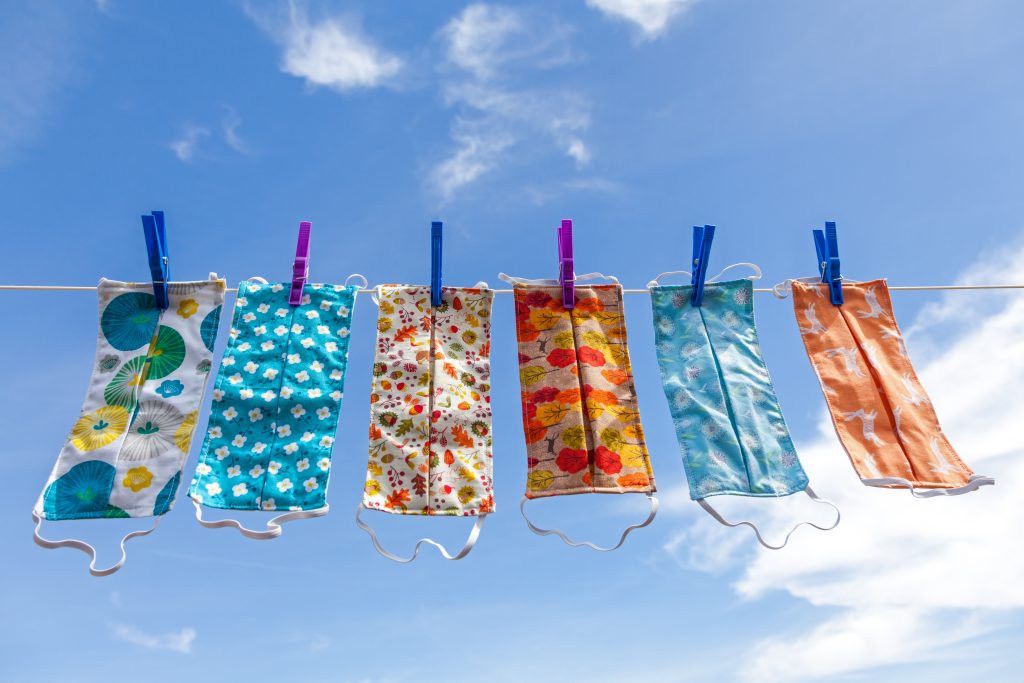Mask Selection
✓ DO select a cloth mask with at least two layers of tightly woven fabric.
✓ DO select a mask that covers your mouth and nose completely.
✓ DO select a mask that fits your face snuggly and does not fall down when you speak or bend over.
x DON’T choose a mask that is made from a material that is difficult to breathe through, like vinyl.
x DON’T choose a mask that has an exhalation valve or vent. These can allow your respiratory droplets to escape, rendering your mask much less effective at protecting others.
x DON’T rely on plastic face shields alone. Face shields are meant to protect one’s eyes. They do not protect the wearer from inhaling another person’s respiratory droplets and they do not prevent dissemination of the wearer’s respiratory droplets.
- TIP: If you’ve struggled to find a mask that fits your face snuggly and doesn’t fall down, you may have better luck with a child’s size mask. Children’s masks in adult-friendly prints are easy to find and order online. Alternatively, it may be that the masks ear loops are too large; consider switching to a tie-on version for individualized fit or shorten your ear loops by tying a slip knot.
- TIP: If you’re a glasses wearer struggling with foggy lenses, achieving a close fit around the nose is key. Select masks with nose wires that can be molded to more closely fit the curves or your face. Try an over-the-counter anti-fog spray for your lenses.
Mask Wearing
✓ DO wear your mask consistently. Masks should be worn whenever you leave your home, indoors and outdoors (it is okay to remove your mask outdoors if there is no possibility that you will come within 6 feet of others). Masks should be worn whenever you may be within 6 feet of a person who does not live in your household.
✓ DO wear your mask correctly. Masks should fit snugly and should cover your nose and mouth at all times.
✓ DO apply and remove your mask correctly. Handle the mask by touching only the ear loops or ties. Wash your hands before applying and also after removing your mask.
x DON’T remove, lift, or pull your mask down to speak to others.
x DON’T leave your nose exposed. Your nose is a component of your respiratory tract. You can catch COVID-19 through your nose and you can spread the disease to others through your nose; it is just as important to cover your nose as it is to cover your mouth.
x DON’T touch the outside of your mask; if you do, consider your hand contamination and perform hand hygiene immediately. Only handle your mask using the ear loops or ties.
Mask Cleaning
✓ DO wash your cloth face mask regularly. Aim to wash your mask daily, but every other day is satisfactory. Wash your mask immediately (once you get home) following instances of close contact with others.
✓ DO include your mask with your regular laundry. Masks are best laundered on the warmest acceptable setting, with your usual laundry detergent, and tumbled to dry. Alternatively, masks may be hand-washed with soap and warm water and hung overnight to dry.
✓ DO replace surgical masks (if you wear these as opposed to cloth) as often as possible, ideally daily.
